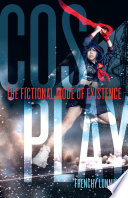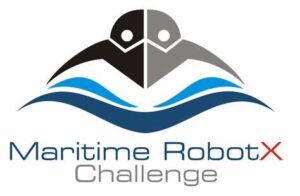I am happy to say that I have joined the faculty of the University of Notre Dame as the newest assistant professor in the Department of East Asian Languages and Cultures. Between preparations for my new job and the release of my book (available now through University of Hawai’i Press, or through Amazon in three days), this summer has been crazy busy! The semester hasn’t even started, and Notre Dame has a ton of things going on. It’s a really exciting place to be. Here’s hoping I can help keep the energy levels up!
Author Archives: akennell
New podcast interview – Frenchy Lunning on Cosplay
In my latest interview for the New Books Network, Frenchy Lunning discusses her book Cosplay: The Fictional Mode of Existence. Cosplay, a portmanteau of “costume” and “play,” emerged from geeky Japanese subcultures to become a popular hobby, and even profession, around the world. Lunning dove into the reasons why people cosplay through interviews, pictures, and her own firsthand experience of cosplay events in America and Japan. She distills the essence of cosplay to performance and the negotiation of identity, a pair of concepts that she interrogates in part by contrasting cosplay practices in America and Japan.

Satoshi Kon, anime, and manga article
The International Journal of Comic Art has just published an article of mine, “Satoshi Kon’s Opus through his Anime” (vol. 24, no. 2, Fall 2022), which means rather a lot to me. I hope you’ll pardon a bit of a digression for this one.
A decade ago, I presented a paper on the famed anime director Satoshi Kon at a regional conference of the Modern Language Assocation. Kon’s sudden death from pancreatic cancer in 2010 had shocked the anime world, and an array of tributes were produced in the immediate aftermath. By 2014, however, that wave had crested, and I was worried that Kon’s brilliant films would slowly be forgotten. So, I made one of my first conference talks as a Ph.D. student into my own small contribution to maintaining Kon’s legacy. A few months later, I presented a revised version for one of the Popular Culture Association/American Culture Association’s regional conferences. Excitingly, a member of the audience at that conference kindly invited me to contribute a chapter about to a book that he was editing. I hadn’t even earned my Ph.D., but I was already doing exactly what I had entered academia to do: help people learn about interesting, meaningful aspects of Japanese media that they wouldn’t otherwise hear about.
By the time I sat down to write my chapter, a second wave of material keeping Kon’s legacy alive had started to appear, and it included articles by more advanced scholars – in particular, Sandra Annett, whose article on nostalgic remediation in Martin Scorsese’s Hugo and Kon’s Paprika brilliantly encapsulated and extended the ideas that I had been fumbling toward in my presentations. So, I had mixed feelings when the book was delayed and ultimately cancelled due to the editor’s unfortunate illness.

I felt less of a drive to push Kon’s filmography to the forefront, but then, my work on the subject had advanced quite a bit thanks to these other scholars’ publications. I moved on from my early presentations, which had focused on the dynamic between Kon’s fascinating animation techniques, on one hand, and memory and the artistic tradition on the other. I came to focus instead upon the interplay of media within Kon’s overall oeuvre, including both the anime that made him famous but also the early manga that launched his career. While Kon’s manga had been re-issued (and translated into English) after his death, they did not spawn much in the way of scholarship.
I kept returning to my chapter on Kon over the years. My ideas further developed when I started teaching a class on anime that, naturally, featured a unit on Kon’s films. The final article synthesizes earlier scholarship on Kon’s anime by scholars like Annett, Thomas Lamarre, Melek Ortabasi, and Christopher Bolton, which I then apply to mind- and medium-bending manga called Opus. I wasn’t sure how much interest it would meet with, but John Lent, IJOCA’s editor, whipped it through review and into press with startling and impressive precision. (I can see why everyone I know who has published in IJOCA speaks so well of the process.)
All of which is to say that I am very pleased to offer up this article for your perusal. If you do look it up, please do take the time to check out the journal’s other articles. Alice fans in particular might like Mimi Okabe’s article on a Canadian publisher’s adaptation of Jane Austen’s Sense and Sensibility into a manga-style graphic novel.
Alice manga talk posted
It’s always a joy to speak for the Lewis Carroll Society of North America, and now – less than a week since I spoke about Alice manga for them – they have posted the talk to Youtube. Enjoy a speed-run of over half a century of Alice manga by everyone from Keiko Takemiya to Hideo Azuma, Akira Otomo to CLAMP, Kaori Yuki to Jun Mochizuki.
Book cover finalized!

The cover of Alice in Japanese Wonderlands has been finalized, and it’s awesome! The featured image is from Sakura Kinoshita’s ALICE IN WONDERLAND Picture Book.
Ms. Kinoshita was kind enough to grant me permission to use the illustration. If you like the image, please consider trying some of her other works, like the manga Mythical Detective Loki Ragnarok and tactics or the smart phone game Thousand Noble Heroes, which features her character designs.
Alice manga digital talk – March 5
Fluttering Across the Pages of Manga History
I’ll be speaking for the Lewis Carroll Society of North America this weekend about Alice manga – important artists, pivotal points in the history of manga, and key genres. Well, that makes it sound rather important, but it amounts to me geeking out about some fabulous manga. Please do join me if you feel so inclined. ?
Sunday, March 5
3:30pm–4:30pm EST
Access through LCSNA
2022 Maritime RobotX Challenge Results!
This is the third time that I’ve worked on the Maritime RobotX Challenge, but the first time I wasn’t able to be there in person to watch the teams compete. 21 teams raised money, designed and created the mechanics needed to carry out specified tasks, and programmed those parts to carry out said tasks autonomously – all while documenting their process and discoveries through team videos and detailed websites. This year, I judged the teams’ websites.
The results are in. It’s been such a pleasure to see not only how these teams handle the difficult tasks in front of them, but also how they grow over time. I was introduced to RobotX through Mike Resner and the Osaka Prefectural University team, which won this year’s Fearless Award. Check out the link for the other winners, including the trio of teams that won the Partnership & Collaboration award this year for going out of their way to aid teams that got stuck on something. 
The Great Resignation and Japan
I wrote a short piece comparing America’s so-called Great Resignation, or the massive number of workers resigning from their jobs in the wake of the outbreak of COVID-19, with Japan’s post-outbreak employment environment for Accolades, the alumni magazine for NC State’s College of Humanities and Social Sciences.
New look coming
It’s been a few years, and a lot has happened. This site is ready for – and getting – an expansion… but it’s also the beginning of the new school year, so this is going to have to happen in pieces. Please pardon the mess. I hope to have everything done soon.
